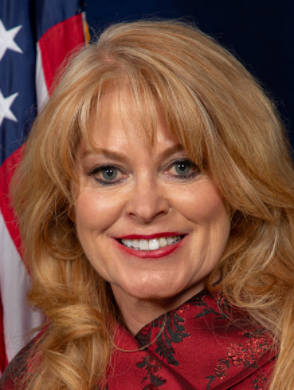Thought Leadership Thursday
Communication is Key to Financial Wellness Strategies

Thought Leadership Thursday Article
| Dear Colleagues,
The life of a state treasurer is dedicated to fiscal issues. Some are massive in scale – like state budgets, bond obligations and pension systems – while others are more important on an individual level – such as 529 accounts, ABLE accounts and unclaimed property. One of the individual-level priorities we need to focus on is the financial wellness of our employees and other public servants. Last fall, Pennsylvania Treasury and partnering state agencies received a generous grant from the Wells Fargo Foundation in collaboration with the Center for State and Local Government Excellence, the International Public Management Association for Human Resources, and the NAST Foundation, to provide financial wellness programming to state employees. Our project had two components, one targeting employees in the Treasury Department and the Pennsylvania Office of Attorney General, and a second where we worked in partnership with the Office of Administration (OA), and the Department of Banking and Securities to reach Pennsylvania’s approximately 79,000 state employees. The first part of the program, specifically targeting Treasury and Office of Attorney General employees, incentivized employees who: · Completed a baseline financial wellness survey. · Started saving a portion of their pay directly into a savings, 529, PA ABLE, or deferred compensation account. · Participated in free one-on-one financial or legal consultations offered through the State Employee Assistance Program. · Return another survey, to be distributed this month, which will help employees better understand their own financial wellness – and to get a sense of aggregate changes in employees’ financial health. The second part of the program, designed to reach state employees in all agencies, also included a variety of integrated efforts such as: · Developing and sharing original financial education videos. · Presenting webinars with an impressive lineup of speakers to discuss topics like Treasury’s PA 529 and PA ABLE programs, saving for retirement, estate planning, financial preparedness for emergencies, and other topics including basics of investing presented through the philanthropic arm of Wells Fargo. (The webinars were so successful that we plan to continue this after the grant period ends.) · Housing all video materials and webinars on OA’s Financial Wellness website for easy access by state employees and their families any time. One important lesson from our experience may sound cliché, but cannot be overstated: Communication is key. Especially during a time of remote work and the challenges brought on by the pandemic, meeting people where they are is more important than ever. We leveraged technology to raise awareness about the program – email, an online employee bulletin board, and the agencies’ intranets – but we also mailed postcards to all state employees’ homes. We did this because not everyone’s job functions involve computer use all day, so employees’ families could notice and take part in the offerings, and because many employees may be overloaded with email in this time of remote work. We also took the opportunity to present the program to every bureau by popping into their meetings to help spread the word and asking directors to encourage their staff to participate, because despite all of our new ways of connecting, there’s no replacing word-of-mouth. To keep the program easily accessible in the long-term, we created mousepads for employees now returning to the office so that they can easily remember where to go for financial education resources and employee assistance. Although we can’t definitively state how much employees’ financial wellness improved due to the program and the communication efforts used to highlight it, we do have preliminary data that shows interest and engagement from a wide swath of the state’s workforce. And we can say for sure that no amount of carefully planned programming will have any impact if we don’t communicate effectively about it – and how to best do that will continue to evolve as our world changes. We’ve tried several things, and found new ways to reach people that we can now take back and use even in promoting our own programs that Treasury has to offer Pennsylvanians. From moment one, NAST fostered a collaborative collective among grant awardees to share information on program offerings, vendors, challenges with rollout, and communications techniques. Thanks to their great work, it was impossible not to learn. Another key takeaway is that you don’t necessarily have to search far to develop financial education programming. Over the past months we have discovered a wealth of expertise right here in our state government to draw on, and have built closer working relationships and knowledge-sharing among our agencies, which is certain to benefit the residents of Pennsylvania who we all serve. This grant funding came at a crucial time when employers, like Treasury and our partner state agencies, were seeking new ways to help employees safeguard and improve their financial well-being. Long past the day when the last grant dollar is spent, we will continue to reap benefits from the effort – not only in the valuable knowledge disseminated to employees and their families through new channels, but in the newly activated and deepened partnerships between our state agencies fostered by working together to implement these programs. Sincerely, Stacy Garrity |


